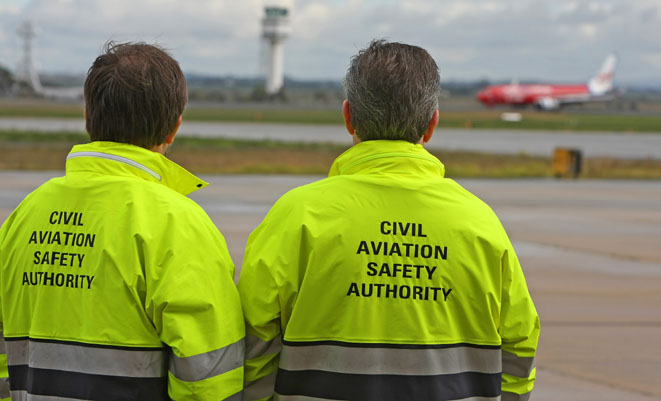A federal government-commissioned report into aviation safety regulation in Australia has called for substantial cultural and structural changes at the Civil Aviation Safety Authority (CASA) and for better leadership of and coordination between Australia’s aviation safety agencies.
The long-anticipated Aviation Safety Regulation Review (ASRR)’s report, released by Deputy Prime Minister and Minister for Infrastructure and Regional Development Warren Truss on Tuesday, makes 37 recommendations, noting that while Australia has an “excellent” airline safety record and an “advanced” aviation regulatory system, that “there are opportunities for the system to be improved to ensure Australia remains a leading aviation state”.
Those opportunities revolve primarily around improving the relationship between the regulator – CASA – and the aviation industry, which it describes as, “in many cases, adversarial”.
“Leading regulators across the world are moving to performance-based regulation, using a ‘trust and verify’ approach, collaborating with industry to produce better safety outcomes and ensuring the regulator stays in touch with rapidly advancing technology and safety practices,” the report’s executive summary reads.
“Due to the present adversarial relationship between industry and CASA, Australia lacks the degree of trust required to achieve this important aim. Sharing safety data is a fundamental principle of good safety management.”
The report sees the recruitment of a new head of CASA – current Director of Aviation Safety (DAS) John McCormick is standing down at the end of August – as an opportunity to reform the culture of the organisation. It notes: “Many have argued that the DAS should be a pilot, or at least experienced in aviation operations, suggesting this experience is necessary to understand the industry. The Panel, however, is of the opinion that the most important qualification for the DAS is leadership and management experience and capabilities in cultural change of large organisations.”
The ASRR also calls for structural change at CASA to “align its organisation with CASA”.
”Countries such as Canada and New Zealand have largely structured their safety oversight program to align with the industry, and have specific groups dedicated to industry sectors (eg GA, airlines, aircraft certification, maintenance, airports and air navigation services),” the report says. It recommends that CASA should adopt a “client-orientated output model” organisational structure similar to that used by the New Zealand CAA.
“Many variations of such a model are possible, and the proposal is not prescriptive. However, the key intention is to clarify accountability and improve the points of contact for the aviation community.”
As for CASA’s ongoing Regulatory Reform Program, which “has led to widespread ‘reform fatigue’ within the industry”, the report recommends the adoption of “a more manageable (but regular) process of periodic maintenance”. It also recommends “returning to a third tier of regulation, removing as much detail as possible from regulations, and using plain language standards in the third tier.”
Other recommendations for CASA include re-establishing small offices at major airports, developing an industry exchange program, that the CASA complaints commissioner report to the CASA board, and publishing key performance indicators for service delivery functions.
More broadly the report calls a more active role in aviation safety policy from the Department of Infrastructure and Regional Development, noting that: “No single agency is responsible for the overall performance and health of the aviation safety system.“
It recommends that the ICAO-mandated State Safety Program (SSP) be used as the basis for a strategic plan for aviation safety in Australia.
“Over time the Department’s policy coordination role and policy leadership authority has either eroded or not been utilised to its full potential, and as a consequence, its governance and policy responsibility needs to be re-established and reinforced. The Panel considers this could be done under the authority of a reinvigorated forward-looking SSP.”
Such an SSP, the report says, should be developed as a “strategic plan for the aviation safety system”.
In releasing the report Minister Truss says the “government will commence consideration of the report in detail without delay.”
The report’s release has been welcomed by the aviation industry, but at least one figure has warned that the report must now be followed up by action.
“The key issue will be Minister Truss’s response, which looks like it may take some time,” a senior industry figure has told Australian Aviation.
“We will have a closer look at the detail of the report – but at the end of the day it is just a report – until Truss acts.”
Minister Truss has invited industry and public feedback on the review by June 30. The report, which was authored by former Airservices chairman David Forsyth, Don Spruston, former Director-General of Civil Aviation at Transport Canada, and Roger Whitefield, former Head of Safety at British Airways, can be downloaded from the Department of Infrastructure’s website.

















PWM
says:It is always a pleasure dealing with the FAA who don’t have their hand in your pocket and are pro aviation unlike CASA the Anti General Aviation Authority.
I should also mention that the USA has a Pilots Bill of Rights.
Ben
says:An interesting report! From a taxpayers perspective some of the ideas sicken me – like reopening field offices. I would be amazed to see that happen under this government.
Also the restructure of CASA makes little sense. It seems to be a recipe for inefficiency and of creating non-standardized procedures. The proposed structure is almost what they had until recently – ie the same structure that got them into the mess they are today!
There are some little bits and pieces which are good, but I think overall many will be disappointed. This will do little to save the dying industry.